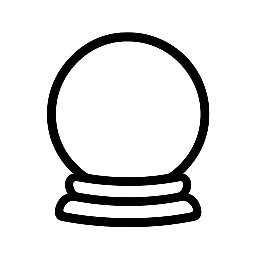Kabbalah, an ancient Jewish mystical tradition, has long been a source of fascination for people around the world. Its symbols, such as the Hamsa, have become ubiquitous in modern times, adorning everything from jewelry to home decor. However, beneath the superficial appeal of these symbols lies a rich and complex system of thought that offers profound insights into the nature of reality, the human condition, and the divine. In this article, we will delve beyond the Hamsa and explore the deeper meaning of Kabbalah symbols in modern times.
The Tree of Life: A Map of the Universe
At the heart of Kabbalah is the Tree of Life, a intricate diagram that depicts the interconnectedness of the universe. Consisting of ten sephirot (energy centers) and 22 paths, the Tree of Life is a map of the divine realm, illustrating the flow of energy and consciousness from the infinite to the finite. Each sephirah represents a different aspect of the divine, such as wisdom, compassion, and strength, and the paths between them symbolize the relationships and interactions between these aspects. By studying the Tree of Life, we can gain a deeper understanding of the underlying structure of reality and our place within it.
The Hamsa: A Symbol of Protection and Blessing
The Hamsa, also known as the Hand of God, is one of the most recognizable Kabbalah symbols. This hand-shaped amulet is believed to offer protection and blessing, warding off negative energies and attracting positive ones. However, the Hamsa is more than just a decorative trinket; it is a powerful symbol of the divine feminine, representing the receptive and nurturing aspects of the universe. By wearing or displaying a Hamsa, we are reminded of the importance of balancing our own energies and cultivating a sense of receptivity and openness to the world around us.
The Star of David: A Symbol of Harmony and Balance
The Star of David, also known as the Magen David, is another iconic Kabbalah symbol. This six-pointed star is composed of two interlocking triangles, representing the harmony and balance between the divine and human realms. The Star of David is often seen as a symbol of protection and good fortune, but it also holds a deeper significance, representing the union of opposites (e.g., masculine and feminine, active and receptive) and the balance of energies within ourselves and the world. By meditating on the Star of David, we can cultivate a sense of inner harmony and balance, and align ourselves with the natural order of the universe.
The Menorah: A Symbol of Light and Consciousness
The Menorah, a seven-branched candelabrum, is a sacred Kabbalah symbol that represents the light of consciousness and the divine presence. Each branch of the Menorah corresponds to a different sephirah on the Tree of Life, and the flames that burn on each branch represent the illumination of our own consciousness and understanding. The Menorah is a powerful symbol of spiritual growth and awakening, reminding us of the importance of cultivating our inner light and sharing it with the world. By contemplating the Menorah, we can deepen our understanding of the nature of light and consciousness, and align ourselves with the divine plan.
Conclusion: Embracing the Depth and Complexity of Kabbalah Symbols
Kabbalah symbols, such as the Hamsa, Star of David, and Menorah, offer a window into a profound and complex system of thought that can enrich our lives and deepen our understanding of the world. By exploring the deeper meaning of these symbols, we can move beyond their superficial appeal and tap into the rich spiritual heritage of Kabbalah. Whether we are seeking protection, blessings, or spiritual growth, the symbols of Kabbalah offer a powerful tool for personal transformation and self-discovery. As we embark on this journey of exploration, we may find that the symbols of Kabbalah become a source of inspiration, guidance, and wisdom, illuminating our path and connecting us to the divine.


Leave a Reply